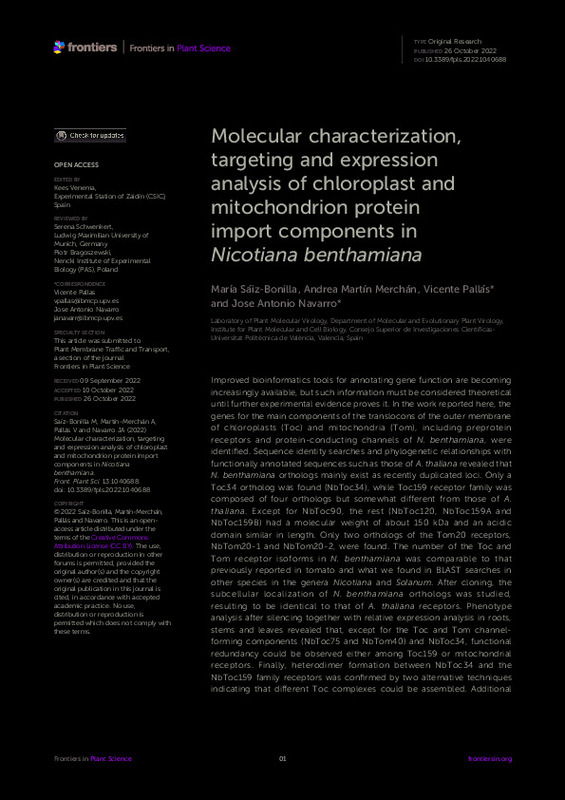JavaScript is disabled for your browser. Some features of this site may not work without it.
Buscar en RiuNet
Listar
Mi cuenta
Estadísticas
Ayuda RiuNet
Admin. UPV
Molecular characterization, targeting and expression analysis of chloroplast and mitochondrion protein import components in Nicotiana benthamiana
Mostrar el registro completo del ítem
Sáiz-Bonilla, M.; Martín Merchán, A.; Pallás Benet, V.; Navarro Bohigues, JA. (2022). Molecular characterization, targeting and expression analysis of chloroplast and mitochondrion protein import components in Nicotiana benthamiana. Frontiers in Plant Science. 13:1-21. https://doi.org/10.3389/fpls.2022.1040688
Por favor, use este identificador para citar o enlazar este ítem: http://hdl.handle.net/10251/193100
Ficheros en el ítem
Metadatos del ítem
| Título: | Molecular characterization, targeting and expression analysis of chloroplast and mitochondrion protein import components in Nicotiana benthamiana | |
| Autor: | Martín Merchán, Andrea Navarro Bohigues, Jose Antonio | |
| Fecha difusión: |
|
|
| Resumen: |
[EN] Improved bioinformatics tools for annotating gene function are becoming increasingly available, but such information must be considered theoretical until further experimental evidence proves it. In the work reported ...[+]
|
|
| Palabras clave: |
|
|
| Derechos de uso: | Reconocimiento (by) | |
| Fuente: |
|
|
| DOI: |
|
|
| Editorial: |
|
|
| Versión del editor: | https://doi.org/10.3389/fpls.2022.1040688 | |
| Código del Proyecto: |
|
|
| Agradecimientos: |
Funding This work was funded by grant PID2020-115571RB-I00 from the Spanish Agencia Estatal de Investigacion (AEI) and Fondo Europeo de Desarrollo Regional (FEDER). JN and MS-B are the recipients of a postdoctoral contract ...[+]
|
|
| Tipo: |
|









